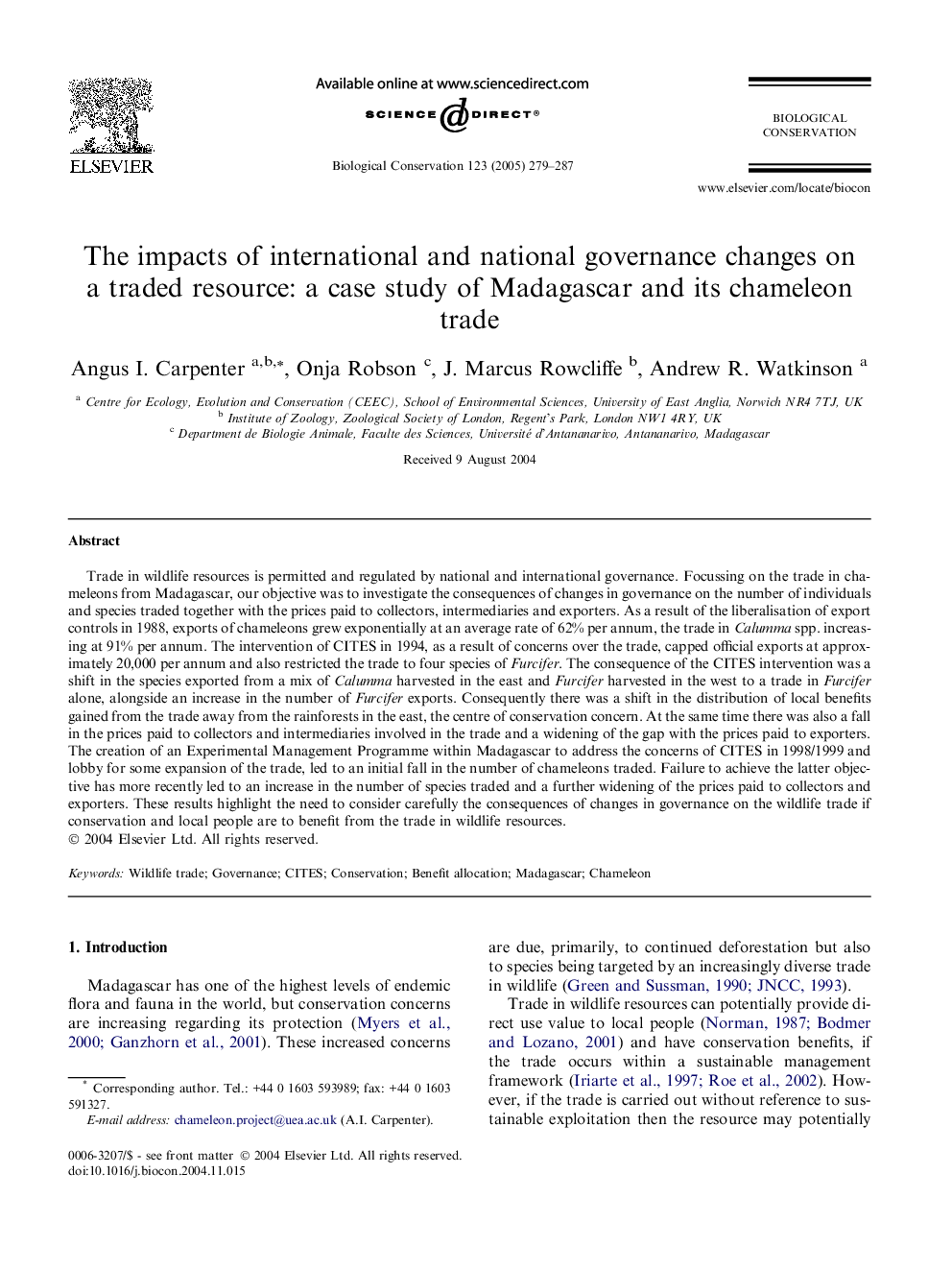| کد مقاله | کد نشریه | سال انتشار | مقاله انگلیسی | نسخه تمام متن |
|---|---|---|---|---|
| 9446182 | 1304653 | 2005 | 9 صفحه PDF | دانلود رایگان |
عنوان انگلیسی مقاله ISI
The impacts of international and national governance changes on a traded resource: a case study of Madagascar and its chameleon trade
دانلود مقاله + سفارش ترجمه
دانلود مقاله ISI انگلیسی
رایگان برای ایرانیان
کلمات کلیدی
موضوعات مرتبط
علوم زیستی و بیوفناوری
علوم کشاورزی و بیولوژیک
بوم شناسی، تکامل، رفتار و سامانه شناسی
پیش نمایش صفحه اول مقاله

چکیده انگلیسی
Trade in wildlife resources is permitted and regulated by national and international governance. Focussing on the trade in chameleons from Madagascar, our objective was to investigate the consequences of changes in governance on the number of individuals and species traded together with the prices paid to collectors, intermediaries and exporters. As a result of the liberalisation of export controls in 1988, exports of chameleons grew exponentially at an average rate of 62% per annum, the trade in Calumma spp. increasing at 91% per annum. The intervention of CITES in 1994, as a result of concerns over the trade, capped official exports at approximately 20,000 per annum and also restricted the trade to four species of Furcifer. The consequence of the CITES intervention was a shift in the species exported from a mix of Calumma harvested in the east and Furcifer harvested in the west to a trade in Furcifer alone, alongside an increase in the number of Furcifer exports. Consequently there was a shift in the distribution of local benefits gained from the trade away from the rainforests in the east, the centre of conservation concern. At the same time there was also a fall in the prices paid to collectors and intermediaries involved in the trade and a widening of the gap with the prices paid to exporters. The creation of an Experimental Management Programme within Madagascar to address the concerns of CITES in 1998/1999 and lobby for some expansion of the trade, led to an initial fall in the number of chameleons traded. Failure to achieve the latter objective has more recently led to an increase in the number of species traded and a further widening of the prices paid to collectors and exporters. These results highlight the need to consider carefully the consequences of changes in governance on the wildlife trade if conservation and local people are to benefit from the trade in wildlife resources.
ناشر
Database: Elsevier - ScienceDirect (ساینس دایرکت)
Journal: Biological Conservation - Volume 123, Issue 3, June 2005, Pages 279-287
Journal: Biological Conservation - Volume 123, Issue 3, June 2005, Pages 279-287
نویسندگان
Angus I. Carpenter, Onja Robson, J. Marcus Rowcliffe, Andrew R. Watkinson,